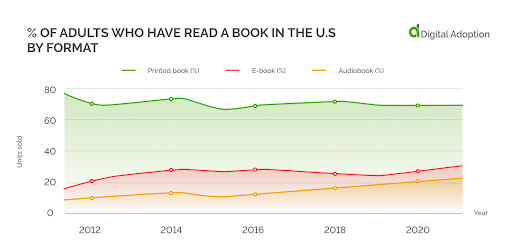Book publishing is an ancient business. Historical records show that the first printed book was published way back in the 1300s. Physical books ruled the world for centuries until as recently as the 2010s.
With the explosion of digital book reading devices such as the Kindle, online publishing has become the norm. However, physical books have not died yet, with millions of printed books sold daily.
So, to what degree has the book publishing business turned digital in the United States?
Chart 1 shows that, in 2020, around 756 million units of printed books were sold in the United States. In comparison, the number of e-books sold in the same period stood at 191 million. Four printed books were sold for every e-book sold in the U.S. It’s also important to note that the number of printed books sold in 2021 stood at 825 million, the highest in more than two decades.
This means that while e-book sales have picked up, print sales are four times higher and are growing steadily in the U.S market.

Chart 2 shows the share of adults who have read a book in the United States in different formats. The data shows that the percentage of e-books and audiobook readers increases over time. The share of adults who have read an e-book grew from 17% to 30% between 2011 and 2021. In the same period, the figures for audiobooks increased from 11% to 23%. However, the share of adults who have read a printed book has fallen from 72% to 65% and is holding steady around that mark.

Chart 3 shows the preferred book format among adults in the U.S. Interestingly, even during the pandemic, when movement restrictions were in place, printed books were preferred by a majority. In a survey conducted across the United States between March and April 2020, 70% said they preferred either new or used print books, whereas about 25% said they preferred e-books.




